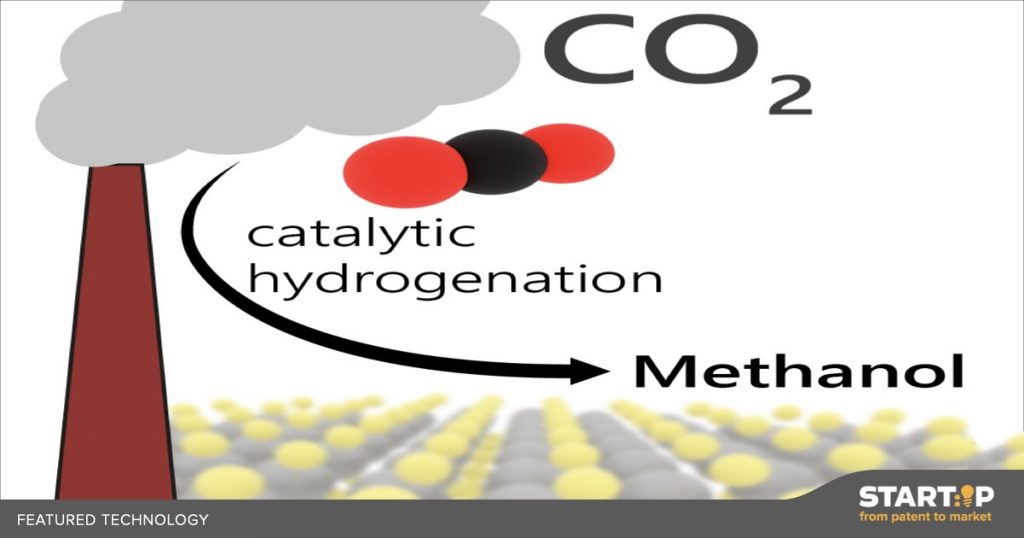Reduced carbon emissions are desperately needed to prevent global warming. Carbon dioxide (CO2) waste from industrial flue gas can be recycled, by reacting on a chemical catalyst, to produce methanol, but other compounds in flue gas interfere with this reaction. These researchers have developed a catalyst that reacts with CO2, but not the contaminants, to produce methanol.
START:IP
Technology Abstract
Recycling Carbon Dioxide into Methanol
Recycling Carbon Dioxide from Flue Gas into Methanol
Bookmark7
Methanol is an extremely useful alcohol in many industrial settings, for example in the production of adhesives, foams and solvents, as well as for fuels and energy. As such, using CO2 waste from flue gas to make methanol is an effective example of circular economy – reusing our resources rather than depleting them and causing adverse effects on our environment. Current catalysts for generating methanol from CO2 are sensitive to reacting with other compounds found in flue gas, such as sulfur. This means that the CO2 first needs to be purified before the catalyst can be used effectively, which is both inefficient and costly. These researchers have developed a catalyst that is not affected by sulfur contaminants, so that purification is no longer needed. The catalyst is easy to produce and can be used for many reactions. Furthermore, it is possible to produce other alcohol products, not just methanol, by manipulating the pressure used to perform the reaction. The CO2 found in flue gas from industrial processes is a major contributor to carbon emissions, and this is a simple solution to take it away from the atmosphere and turn it into a useful product instead.
If you click the button and fill out the form to be “matched” with a technology, we will introduce you to the scientist / transfer manager of the respective research institution. In this way, you immediately have the chance to receive more detailed information and to start discussions about a possible joint project.




